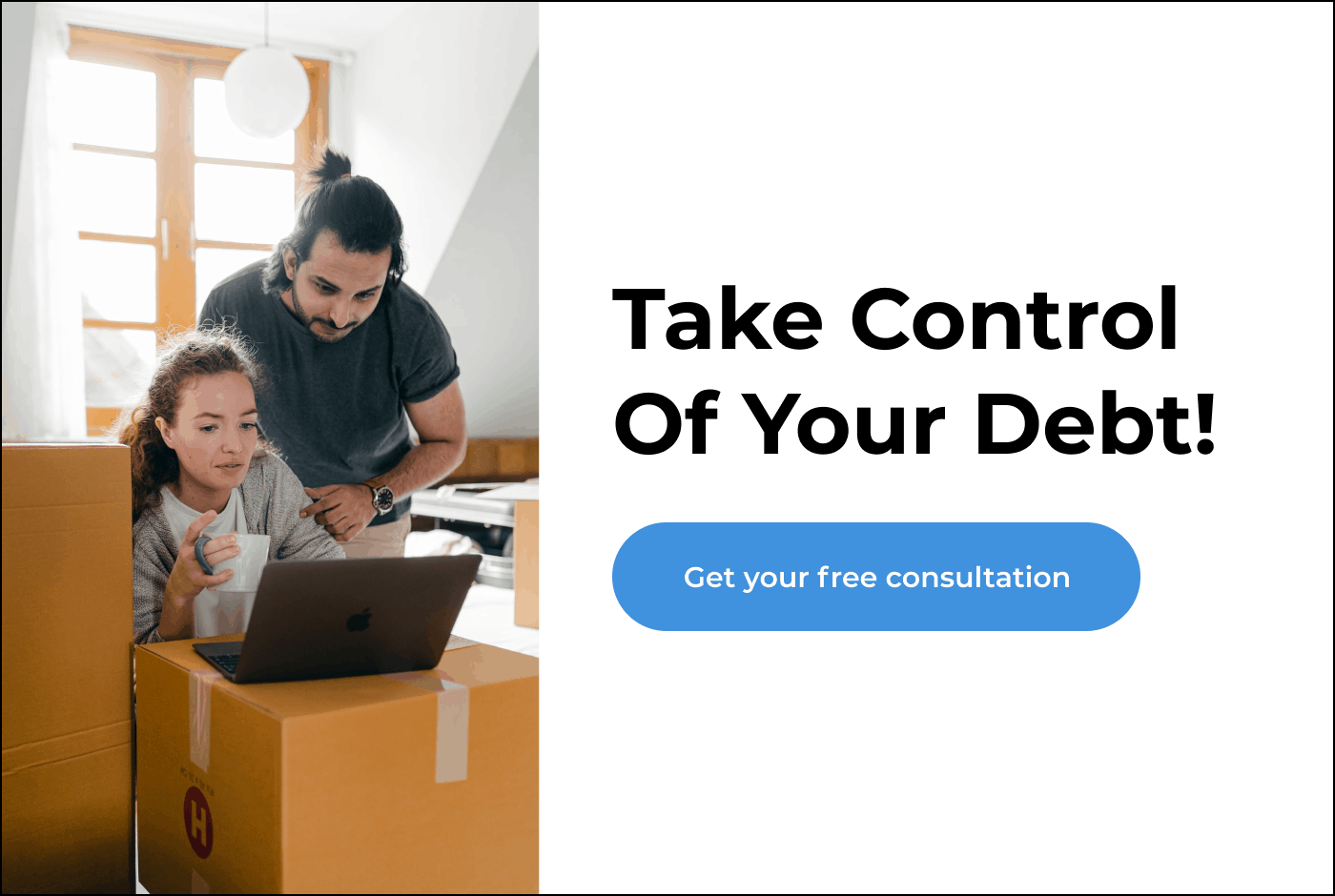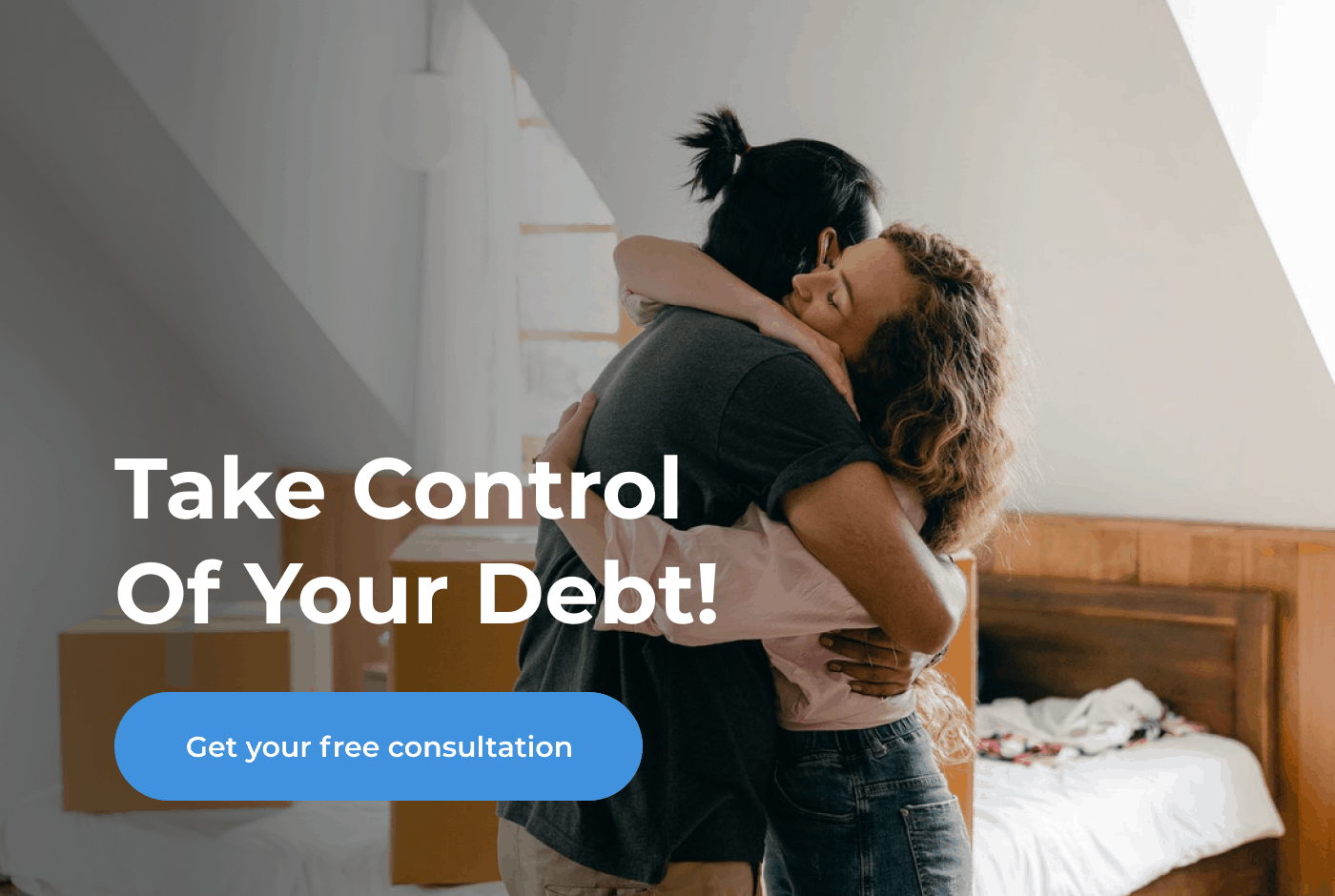Smart Tips On How To Pay Off Debt Fast
Posted on December 6, 2020 in Debt
The idea of remaining debt-free and saving when we wanted something nice seemed like an easy task when we were younger. It was simple — we worked hard and made all this money, and then when we needed a new car we would simply have the money. Right?
For most adults, this idea is simply not reality, as the requirements for a vehicle, house, or the occasional emergency expense creates a need for funds that may be outside of your normal pay, pushing you toward utilizing credit instead of cash.
To push you further towards debt, banks and other lending companies require established credit history when considering borrowing for large expenses such as houses. This means they want to see you are responsible with repaying your debt and making payments on time.
Credit cards and personal loans are great options for building your credit report, but sometimes debt can get away from you, and you need to find creative ways to get out of debt.
Trapped in Debt
While it’s nearly required that you have a certain amount of debt for building your credit history, too much debt can feel overwhelming.
Minimum debt payments often pay the monthly interest, plus a very small amount toward your principal, leaving you feeling like your monthly payments have had no effect.
If you were to borrow $5,000 from the bank, with the national average of 20% annual interest, you may find yourself paying $100 each month. Out of that $100 payment, $83 will go toward your interest payment, and just $17 will go toward your actual debt.
This means next month, you will have $4,983, still paying $100 the next month, with $82.70 going toward your interest and still just $17 going toward your debt.
At the end of the year, you would have paid $1,200 and your debt would drop just $200, leaving you with a debt of $4,800.
WIth making such a low impact on the overall principal, it’s no wonder many so many card holders feel trapped within their debt.
Paying Off Your Debt
It’s important to find a route toward paying down your debt that fits your lifestyle and funds. In some cases, it may require a slight change in lifestyle as you put more money toward paying off your debt, but keep in mind, the less debt you have the less cash you hand to the lender every month.
It’s important to remember that you did in fact spend money you borrowed from a lending source, which does need to be paid back. Taking the correct steps forward can put you on the road to financial freedom.
Make A Budget
Before you can seriously attack your debt, you need to understand your income and your actual expenses.
You’ll want to split your payments into categories, showing your major debts, (house, cars, student loans), utilities, minor debts (credit cards, personal loans), and your other monthly expenses. You may benefit from splitting your monthly expenses into wants and needs, too.
If you get paid twice a month, it’s important to know when each bill is due as well.
This will give you an idea of how much money you should have at any given time, and what can safely be spent is what we will call a debt-payment. This should leave you with available funds to pay all of your bills, and then some.
This is also your time to evaluate if there is any wasted income, such as the subscription no one uses and you forgot about. Those funds make a great addition to your debt-payment, since they were previously lost anyhow.
One Debt At A Time
Keeping in mind the amount paid toward your interest rates, the only real way to work toward paying off your debt is to pay extra. Paying extra on all of your debts at once will keep you paying higher interest over an extended period of time.
Instead, focus on paying off one debt at a time. Look through your accounts and find a card that has high interest, with a reasonable total debt amount. You’re going to want to review your budget to see how much you’ll have extra to put toward this card every month.
Take your available debt-payment and apply it to this one debt, allowing it to be paid down more rapidly. As the debt decreases, you may find a smaller required payment each month. This is the lender’s attempt at making you take longer to pay your debts off, so they can charge more interest over time. Don’t fall for it.
By maintaining a high payment, you pay more toward your principal each month. As the interest payments decrease over time, you will actually be paying more towards the actual debt every month.
Here’s the real benefit. Once your first debt is paid off, target your next debt. Take your debt-payment plus the old payment, and add it toward your second payment. This is known as the debt avalanche strategy.
The Math
Let’s say you had an extra $100 each month as debt-payment, and you added this to a debt with an $80 a month minimum payment to pay a total of $180 per month. Once this debt is paid off, take your debt-payment, plus your old minimum monthly payment, and add all of it onto your next debt. So, if your second debt has a $60 per month payment, you will now be paying $220 toward this debt ($60 minimum monthly payment + $180 you previously used for the other debt, which is now paid off).
These were already funds that weren’t considered in your budget, since they were going toward old payment. Over time as multiple debts are paid off, this available debt-payment will continue to grow, helping you attack your budget’s major debts.
Consolidation Loans
Consolidation loans refers to taking multiple small debts, and placing them into one large account to be targeted with one payment. This has the potential to create a lower overall interest payment, allowing you to make a larger impact.
Looking at your budget, focus on each of your individual debts. Look towards the interest rates, and how much in total you’re paying towards interest alone.
If you’re planning on opening a consolidation loan or card, understand you will need the available debt-to-income to be accepted. This means if you’ve taken out as much debt as the bank has deemed safe with your financial status, you may be denied.
If you plan on using an existing account, it’s important to calculate how much you’re paying per month currently in interest, and how much you would pay on that account once the debts were added. This will help you understand if this move is the best move in your personal situation.
Equity Loans
Taking a loan out against a physical object, such as your car or home, is considered an equity loan. The available loan amount is directly affected by the cost of the valuable being borrowed against.
It’s important to understand that taking an auto equity or home equity loan means you no longer legally own your possession. The lending unit would have legal ownership until the full value and interest is paid. This means making payments could risk a repossession.
For many lenders with current home or auto loans, they may offer adding a cost against your possession. They technically own the object in the first place, and have chosen to add a higher value to the object to let you borrow against it. For many consumers, the idea of paying a little more per month on a pre-existing bill instead of paying multiple bills can become an appealing option.
It’s important to talk with your individual lender to see what’s at risk to change. Some lenders will re-write an original contract meaning there could be changes in interest rates, minimum payments, or other previous agreements that could cause your loan to become less appealing.
Should You Close Paid-Off Accounts?
Referring more toward credit cards, many consumers have asked if they should close paid off accounts.
Depending on the account type, closing an account could appear positive or negative in the eyes of future lenders. Paying off debts such as auto loans or personal loans shows you are serious about paying off your loans.
When considering lines-of-credit such as credit cards, you must consider your credit report’s credit utilization. This refers to the amount of credit you have available, compared to the amount of credit you are using.
If you had a credit card with $5,000 total available credit, but your current balance is $800, You have a credit utilization of 15%. You can calculate this by taking the credit balance divided by the total available credit.
When considering your credit score, 30% utilization or below is considered being in good standing, and should be your goal.
Additionally, having lots of accounts open with minimal credit utilization can also help show lenders you have diverse accounts, and have had accounts open for a long time (also known as age of credit, which is a factor in your credit score).
The Takeaway: Figure out your budget and see if you can strategically pay down one debt at a time. Otherwise, considering a consolidation loan or equity loan could help you tackle interest, though you’ll generally need a decent credit score to be approved.
With the high interest costs of debt, it’s important to focus on paying off your debt as quick as you can so your money isn’t going down the drain toward interest. It’s not uncommon for debt holders to pay hundreds of dollars a month on interest alone, meaning your money is going straight to the bank and not benefitting your debt whatsoever.
Becoming more familiar with your accounts, debts, and possibilities of consolidation and refinancing with Turbo Finance will place you in control of your finances, and prepare you for the future.
Sources
https://www.thebalance.com/average-credit-card-interest-rate-4772408
https://www.bankrate.com/home-equity/home-equity-loan-risks-and-how-to-avoid-them/
https://www.experian.com/blogs/ask-experian/credit-education/score-basics/credit-utilization-rate/
Related blog posts
Need expert financial advice?
Let TurboFinance connect you with the best consulting services and resources to help you take control of your finances and find a path to build wealth.
Get A Free Consultation Today!

